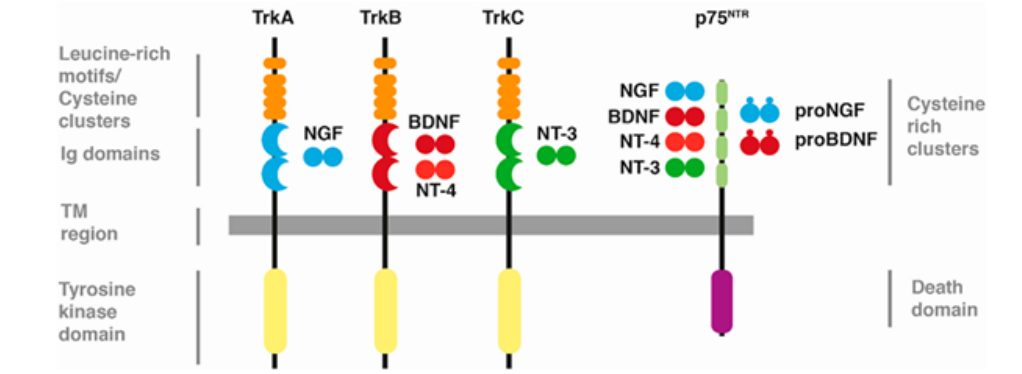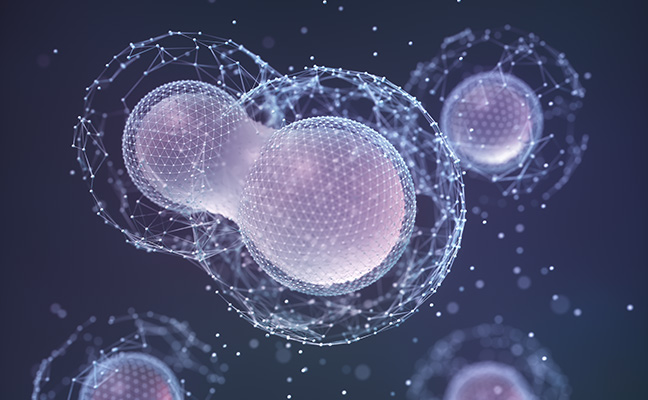Neuroscience Proteins: Your Guardian of Nerve Cell Culture
In the field of neuroscience, the neurotrophin family, a crucial class of proteins, consistently plays the role of "guardians of neurons." They not only play the core role in neuronal growth, development, survival, and functional maintenance, but also demonstrate significant potential in cell culture techniques.
Overview of the Neurotrophin Family
Neurotrophins are a class of protein molecules produced by nerve-innervated tissues (such as muscle) and astrocytes. They are essential for neuronal growth and survival. This family primarily includes Nerve Growth Factor (NGF), Brain-Derived Neurotrophic Factor (BDNF), Neurotrophin-3 (NT-3), and Neurotrophin-4/5 (NT-4/5). These factors bind to specific receptors on neurons, activating downstream signaling pathways, thereby supporting neuronal survival, growth, differentiation, and functional maintenance.

Roles of Neurotrophins in Cell Culture
1. Promoting Neuronal Survival:
In cell culture, neurotrophins can significantly promote neuron survival. For example, NGF promotes mitosis and limits the final number of neurons during the early stage of development, playing a vital role in the survival of neurons in the early stage of development. Similarly, BDNF, abundant in areas like the cerebral cortex and hippocampus, is crucial for neuronal survival and functional maintenance. The addition of these neurotrophic factors to cell culture can effectively prolong neuronal survival and improve the success rate of cell culture.
2. Inducing Neuronal Growth and Differentiation:
Neurotrophins not only promote survival but also induce the growth and differentiation of neurons. They activate the Trk receptor family, enhance growth cone activity and facilitate neurite outgrowth. For instance, BDNF, by activating the TrkB receptor, promoting the growth of axons and dendrites in hippocampal neurons and inducing neuronal differentiation into specific phenotypes. The addition of BDNF to cell culture can facilitate the formation of more complex and functional neural networks.
3. Maintaining Neuronal Functional Integrity:
Neurotrophins help maintain normal neuronal activity by supporting neuronal metabolism and function. They can increase neurotransmitter synthesis and maintain synaptic connections between neurons, thereby promoting learning and memory formation. These effects help mimic the physiological environment of neurons in vivo, providing a more reliable model for neuroscience research.
4. Promoting Neurogenesis:
In the adult brain, particularly in the hippocampus, neurotrophins are involved in the generation of new neurons. They can promote the proliferation and differentiation of neural stem cells to generate new neurons. Leveraging this advantage enables the exploration of neurogenesis mechanisms and offers new perspectives for treating neurodegenerative diseases.
Other Neurotrophic Factors Relevant to Neural Cell Culture
With the application of techniques such as serum-free culture of neurons, novel specific protein molecules have been identified that can also promote the proliferation, differentiation, and survival of neurons. For instance:
1. Ciliary Neurotrophic Factor (CNTF): Produced by Schwann cells and astrocytes, CNTF promotes neuronal survival and prevents apoptosis in cell culture through its signaling pathway. It also facilitates the regeneration and repair of neurons, reduces neuronal death, and promotes neurite outgrowth and synapse formation. By binding to its specific receptor complex (CNTFRα/gp130/LIFRβ), it activates downstream signaling pathways to promote neuronal growth and differentiation. Additionally, CNTF activates astrocytes, promoting their proliferation and activation. This modulates interactions between neurons and glial cells, thereby supporting neuronal growth and survival.
2. Glial Cell Line-derived Neurotrophic Factor (GDNF): Widely used in cell culture, GDNF supports the survival and differentiation of dopaminergic neurons, motor neurons, and other neuronal types. It promotes neuronal growth and differentiation and prevents apoptosis by activating its specific receptors, GFRα and Ret. GDNF also plays a critical role in maintaining neuronal function. By activating signaling pathways such as PI3K, it enhances neurotransmitter synthesis and release, thereby supporting normal neuronal activity. In addition, GDNF facilitates neuronal regeneration and repair by promoting neurite outgrowth and synapse formation in damaged neurons.
East-Mab Bio Provides High-quality Neurotrophins
Name | Cat# | Size |
Recombinant Human BDNF | Y00201 | 10μg /50μg /1mg |
Recombinant Human NT-3 | Y06841 | 10μg /50μg /1mg |
Recombinant Human CNTF | Y05621H | 10μg /50μg /1mg |
Recombinant Human GDNF | Y01421H | 10μg /50μg /1mg |
Recombinant Human β-NGF | Y06941H | 10μg /50μg /1mg |
Recombinant Human NRG1-β1 | Y01621H | 10μg /50μg /1mg |
Additional neurotrophins are currently in development.
References
[1] Baquet ZC, Gorski JA,Jones KR. Early striatal dendrite deficits followedby neuron loss with advanced age in the absence of anterograde cortica!brain-derived neurotrophic factor (J).J Neurosci,2004;24(17):4250-8Berton
[2] O, McClung MA, DiLeone RJ,et al. Essential role of BDNF in the2mesolimbic dopamine pathway in social defeat stress (」). Science, 2006 ;311(5762):864-8.
[3] Nikoletopoulou V, Lickert H, Frade JM,et al. Neurotrophin receptors TrkA and TrkC cause neuronal death whereasTrkB does not (J). Nature,2010;467(7311):59-63.
[4] Lin LF , Doherty DH, Lile JD,et al. GDNF :a glial cell line-derived neu-rotrophic factor for midbrain dopaminergic neurons (J ). Science , 1993.260(5111):1130-2.
[5] Strand AD,Baquet ZC,Aragaki AK,et al. Expression of profiling ofHuntingtons disease models suggests BDNF depletion plays amajor rolein striatal degeneration(J).Neuroscience,2007 ;27(43):1758-68.






